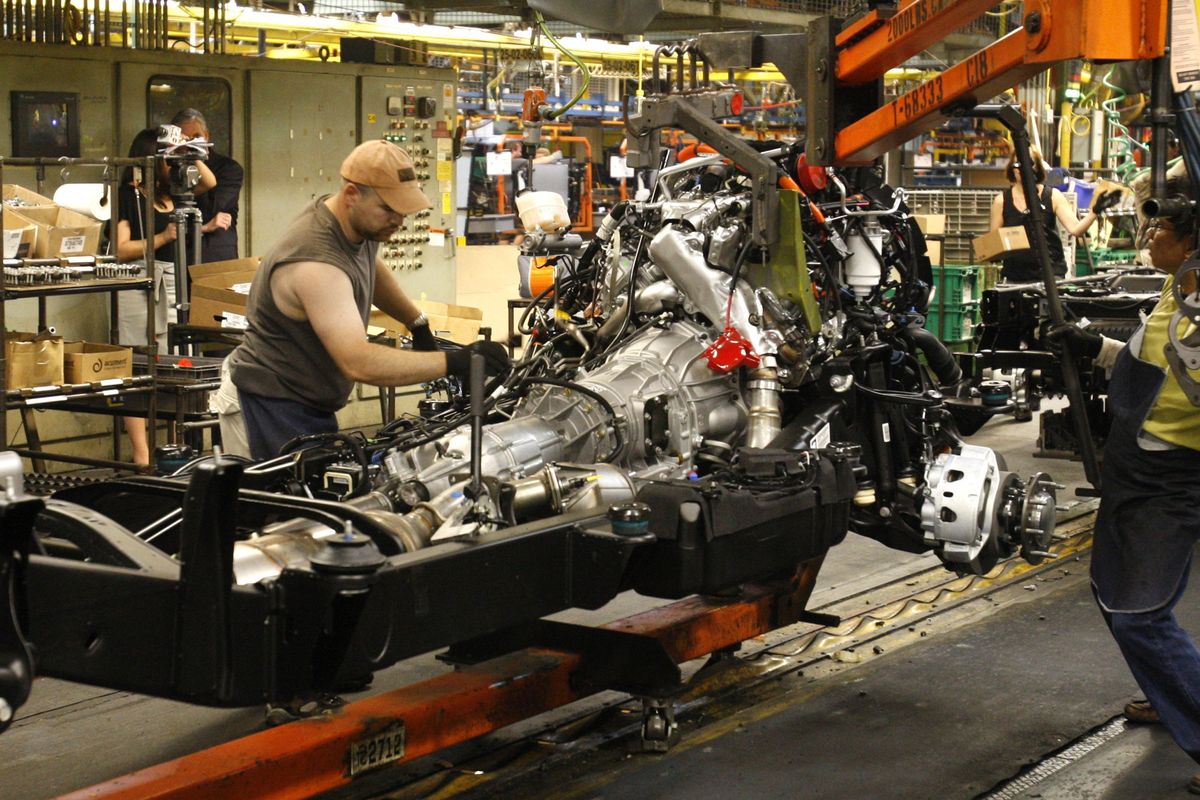Leading the recovery
Manufacturing sector lifts economy as production, new orders surge

WASHINGTON – It’s a rare bright spot in an otherwise troubled economy: The nation’s manufacturing sector has now grown for a solid year, and more of its companies say they’re ready to hire.
Chip maker Texas Instruments says its business has recovered to pre-recession levels. Intel, which makes semiconductors, posted its best quarterly profit in a decade. And chemical giant DuPont says its sales volume is up and recently raised its prices.
The Institute for Supply Management said Monday its manufacturing index slipped in July to 55.5 from 56.2 in June. But it was the 12th straight month of readings above 50, which indicates expansion. At the depths of the recession, the index was closer to 30.
“Measures of production and new orders, which signal future business, both grew again, although more slowly than in June. And more manufacturers said they were willing to hire people.
The report, which comes out on the first business day of the month, surveys production managers at about 400 companies around the country, makers of products ranging from furniture and computers to food and tobacco.
Manufacturing growth has cooled for the past three months, but most of that was expected. The industry experienced strong growth last year because companies were replenishing their stockroom shelves after the recession.
Manufacturing accounts for about a fifth of U.S. economic activity, so it can’t carry the recovery on its own. But at a time when the housing market, consumer spending and other sectors of the economy are limping along, any sustained growth is welcome news.
The Dow Jones industrials surged 208 points to their highest level since May.
The service sector, which employs 80 percent of Americans, has lagged as high unemployment has made people nervous about spending money, especially for things like meals out and vacations.
“Manufacturing has led the entire recovery,” said Brian Bethune, chief financial economist at IHS Global Insight.
The housing market has struggled since a tax credit for homebuyers expired in April, a point confirmed Monday by a separate report that showed construction spending edging up slightly in June, with all the strength coming from government building.
The government reported last week that total economic growth slowed to a rate of 2.4 percent this spring, down from 3.7 percent growth in the first quarter and 5 percent at the end of last year.
In a speech Monday in South Carolina, Federal Reserve Chairman Ben Bernanke said the nation faces a long road back to good economic health. He noted the worst of the financial crisis is behind the nation and the economy is growing again.
“But we have a considerable way to go to achieve a full recovery in our economy, and many Americans are still grappling with unemployment, foreclosure and lost savings,” Bernanke said.
Indeed, a county-by-county Associated Press analysis found that the nation’s overall economic stress worsened in June after easing for four months in a row. Bankruptcies in the West and foreclosures outside the Sun Belt outweighed lower unemployment.
The manufacturing index peaked at 60.4 in April. Its low for the recession was 32.5, in December 2008.
The July report suggests that manufacturing will grow for the rest of the year, and more quickly than the broader economy, said Dan Meckstroth, chief economist for the Manufacturers Alliance/MAPI, an industry association.
Businesses are investing more money on equipment and software, instead of new workers. That is helping them grow at a time when customers are spending less.
Democrats on Capitol Hill seized on the success of manufacturing to make the case that that their economic strategies are working, highlighting the creation of 136,000 new jobs since last December. Manufacturers have added jobs for six straight months for the first time since 2006, they said.
With the midterm elections three months away, Republicans are arguing that Democrats’ $862 billion stimulus program hurt the economy by increasing the deficit without adding enough jobs. They say cutting taxes and regulation would have helped more.
While the manufacturing sector keeps growing, the construction industry has struggled since the federal government ended a popular homebuyers tax credit on April 30.
The only strength in June came in the government sector. Overall public construction rose 1.5 percent. That reflected a 1.1 percent increase in spending by state and local governments on roads, sewer projects and public buildings, and a 4.6 percent increase in federal government spending on projects.